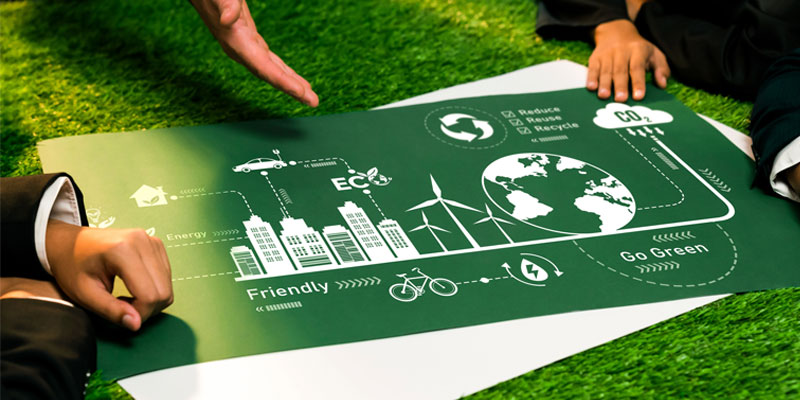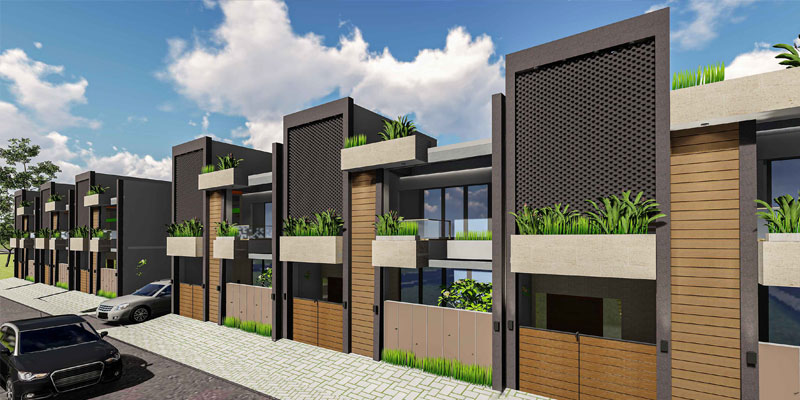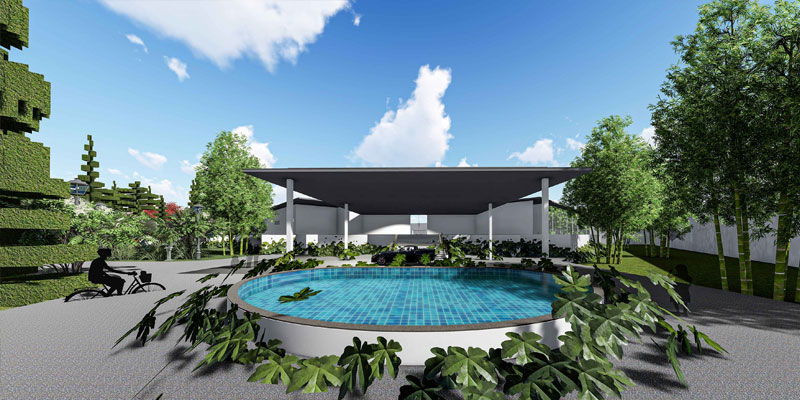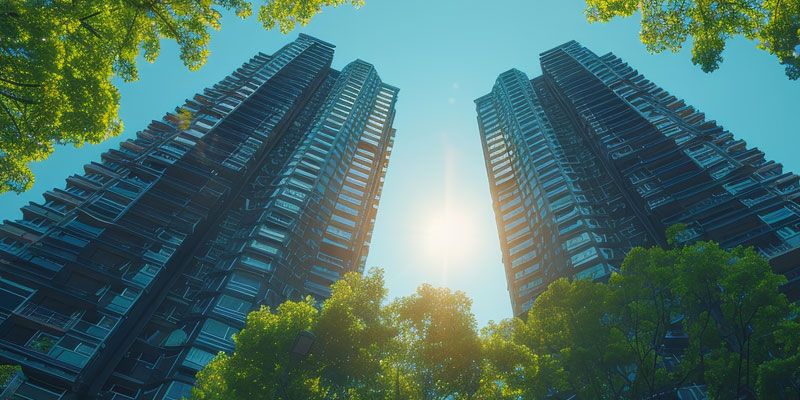Exploring the Rise of Eco-Friendly Developments in Bangalore's Real Estate
Bangalore, which is also referred to as the Silicon Valley of India, is a city that is all about technological development and urban growth. Its skyline, which was once punctuated by green trees, has, over the years, had to make room for a growing population and an active IT industry. But with this fast-paced growth has come its share of environmental problems, leading to a very significant change in the real estate market of the city: the emergence of green developments.
No longer a niche topic, sustainable living and Eco-friendly real estate Bangalore is catching on big time. Both homebuyers and Sustainable housing Bangalore are finding the long-term advantages – both eco-friendly and economic – of adding green approaches to residential and commercial developments. This blog goes deep into the main drivers of this green revolution, discusses the different aspects of environmentally friendly developments in Bangalore, identifies some flagship examples, and discusses the challenges and the way ahead for a genuinely sustainable urban future.
The Green Imperative: Drivers for Eco-Friendly Development

There are the best real estate consultants in Bangalore who are coming together to drive the demand and supply of eco-friendly properties:
The Green Imperative: Drivers for Eco-Friendly Development
Growing realization among citizens concerning climate change, pollution, and depletion of natural resources is the key driver. Buyers are realizing their environmental quotient and are willing to look at Sustainable housing Bangalore homes that cut down on the negative impact as much as possible. They comprehend that eco-living, is a moral imperative, but it can also be instrumental in providing their families and future generations with healthier lives.
Government Incentives and Regulations:
The government has a significant role to play in encouraging green building practices through incentives and regulations. Building codes are being revised to include energy efficiency standards, water conservation strategies, and waste management procedures. Additionally, programs such as green building certifications (e.g., LEED, GRIHA, IGBC) are being promoted through tax relief and quicker approvals, making Eco-friendly real estate Bangalore projects more appealing to developers.
Long-Term Cost Savings:
Although the upfront investment in green technology may appear higher, environmentally friendly houses provide enormous long-term cost savings. Components such as solar panels cut electricity charges, rainwater harvesting minimizes water consumption costs, and energy-saving appliances cut overall energy use. Such savings, along with the ability to sell properties for more money, make Eco-friendly real estate Bangalore homes a cost-effective investment in the long term.
Improved Quality of Life
Green developments have green spaces, plenty of natural lighting and ventilation, and non-toxic materials. These aspects make for a healthier and more pleasant living condition, enhancing the physical and psychological well-being of the occupants. Proximity to parks, gardens, and public areas encourages a community feeling and active lifestyle.
Corporate Sustainability Goals:
The strong presence of multinational corporations in Bangalore, many of whom have ambitious sustainability goals, is also pushing the demand for green commercial spaces. Companies are increasingly seeking office buildings that reflect their environmental values and provide a healthy and productive work environment for their employees.
The Anatomy of an Eco-Friendly Development in Bangalore

Eco-friendly real estate Bangalore
Environmental-friendly developments in Bangalore include an assortment of eco-friendly practices and technologies incorporated even from the design and construction stages to maintenance of the property. Some of the major highlights include:
Energy Efficiency:
This is one of the pillars of Sustainable housing Bangalore buildings. It consists of maximizing building design to capture natural light and air, utilizing energy-efficient materials such as insulated walls and roofs, installing high-performing windows and doors, and adding energy-efficient lighting and appliances. Renewable energy sources such as solar panels are also being integrated in greater numbers to minimize grid dependency.
Water Conservation:
Bangalore, as with other Indian cities, suffers from water shortages. Green developments solve this by installing rainwater harvesting systems to capture and recycle rainwater for non-potable applications such as landscaping and flushing. Low-flow fixtures in kitchens and bathrooms and low-flow irrigation systems for landscaping further reduce water usage. Wastewater recycling and treatment are also becoming standard features.
Waste Management:
Effective waste management that is sustainable is important for minimizing the ecological footprint of residential and commercial spaces. Green buildings in many cases use schemes of source segregation of waste, composting of organic waste, and recycling of other materials. This minimizes landfilling and encourages circular economies.
Green Building Materials:
The selection of building materials has a huge impact on the environmental impact of a project. Green developments focus on utilizing locally obtained, recycled, and low-VOC materials. This saves transport emissions, promotes local economies, and provides improved indoor air quality.
Landscaping and Biodiversity:
Conservation and enhancement of green spaces is a main tenet of sustainable development. This encompasses the use of native plant life in landscaping to maintain local biodiversity, developing green roofs and walls to mitigate the heat island effect as well as enhance air quality, and making available community gardens for residents.
Smart Home Technologies:
The Incorporation of smart home technologies also increases the sustainability of such developments. Smart thermostats maximize energy use, smart lighting systems minimize electricity usage, and water monitoring systems assist in detecting and preventing leaks.
Eco-friendly real estate Bangalore

Bangalore is seeing more and more developers adopting sustainable measures. Below are a few examples that reflect the diversity and ingenuity in eco-friendly development:
Aurora Hills: A Residential Development Embracing Sustainable Living

Aurora Hills stands as a testament to sustainable living, a residential development project that has received official certification from both HDUDA and RERA. The project encompasses a holistic approach to sustainability, integrating various elements that promote a harmonious balance between human living and the environment.

Key Features of Aurora Hills:
Energy Efficiency:
The residences within Aurora Hills are designed to optimize energy usage. Large windows and strategically planned cross-ventilation systems reduce the reliance on artificial lighting and air conditioning. This design not only lowers energy consumption but also creates a healthier and more comfortable living environment.
Green Spaces:
The development incorporates expansive green spaces, thoughtfully landscaped with indigenous trees and plants. These green areas enhance the aesthetic appeal of the community while also providing ecological benefits such as improved air quality, temperature regulation, and biodiversity support.
Community Garden:
A community garden fosters a sense of connection and shared responsibility among residents. It offers a space for residents to grow their own food, promoting sustainable practices and healthy eating habits.
Sustainable Materials and Construction:
Aurora Hills prioritizes the use of sustainable materials and construction practices wherever possible. This includes using locally sourced materials, recycled content, and energy-efficient building techniques.
Benefits of Living in Aurora Hills:
Reduced Environmental Impact:
By incorporating sustainable features, Aurora Hills significantly reduces its environmental footprint. Residents can enjoy a lifestyle that aligns with their values and contributes to a healthier planet.
Health and Well-being:
The abundance of green spaces, access to fresh air and natural light, and opportunities for outdoor activities promote physical and mental well-being.
Community and Connection:
The community garden and shared green spaces foster a sense of community and connection among residents.
Financial Savings:
Energy-efficient design and sustainable practices can lead to significant cost savings on utility bills and maintenance costs.
Aurora Hills represents a forward-thinking approach to residential development, demonstrating that sustainable living can be both comfortable and convenient. It offers a model for future communities that prioritize environmental responsibility, health and well-being, and a strong sense of community
Challenges and the Way Forward
In spite of the increasing momentum, the universal acceptance of eco-friendly developments in Bangalore is beset with some challenges:
Increased Upfront Costs:
The initial capital outlay in green technologies and materials may be greater than for traditional construction, which can discourage sustainable housing Bangalore. But the long-term cost savings and environmental advantages tend to offset this initial outlay.
Lack of Awareness and Expertise:
There still exists the need for heightened awareness among homebuyers on the advantages of green homes and a lack of experienced eco-friendly real estate Bangalore
professionals in green building construction and design.
Policy Implementation Gaps:
Although government policies are supportive, proper implementation and enforcement are necessary to ensure compliance with green building standards in all cases.
Scalability:
Scaling up environment-friendly and sustainable housing Bangalore development to match the increasing commercial and housing needs of a city growing rapidly at the rate that Bangalore is increasing requires creative solution-finding as well as partnership from all hands.
The solution to a cleaner, greener Bangalore is to solve the above problems using:
Financial Incentives and Subsidies:
The government could further encourage greener developments using tax incentives, subsidies, and low-cost interest loans to incentivize them towards being more economical.
Training and Capacity Building:
pending on training schemes for architects, engineers, contractors, and other construction professionals to improve their knowledge of green building techniques is critical.
Public Awareness Campaigns:
Increasing public awareness of the advantages of sustainable living and green homes will stimulate demand and lead more homebuyers to choose eco-friendly homes.
Simplified Approval Procedures:
Streamlining and accelerating the approval procedures for green building developments will induce more developers to embrace green practices.
Innovation and Collaboration:
Encouraging developers, policymakers, researchers, and technology companies to collaborate will propel innovation among green building solutions and technologies.
Conclusion
Eco-friendly developments making headway in the Eco-friendly real estate Bangalore are an encouraging indicator of the city going greener towards a sustainable future. Spurred on by increasing awareness of the environment, favorable government initiatives, sustained economic advantages, and a healthy lifestyle, homebuyers and developers alike are increasingly appreciating the benefits of green buildings. Though there are challenges, momentum is not debatable. By addressing these challenges with strategic policies, capacity building, and collaborative efforts, Bangalore can truly bloom green, setting the stage for a more sustainable and livable urban environment for future generations. The conjoining of technology and nature, the defining feature of Bangalore, is best expressed in these green spaces, building a city that is both a center of innovation and a model of environmental responsibility.







Add comment